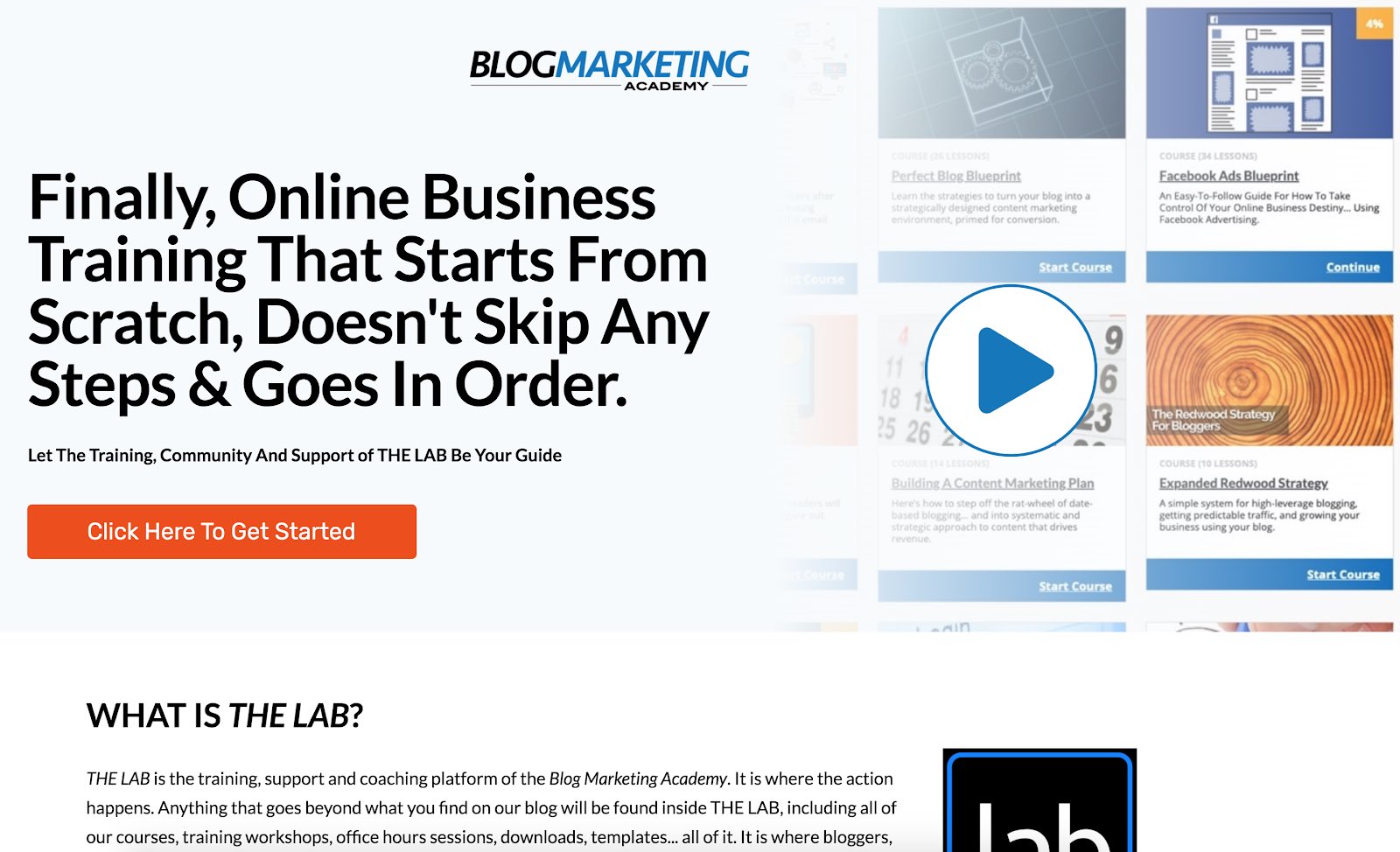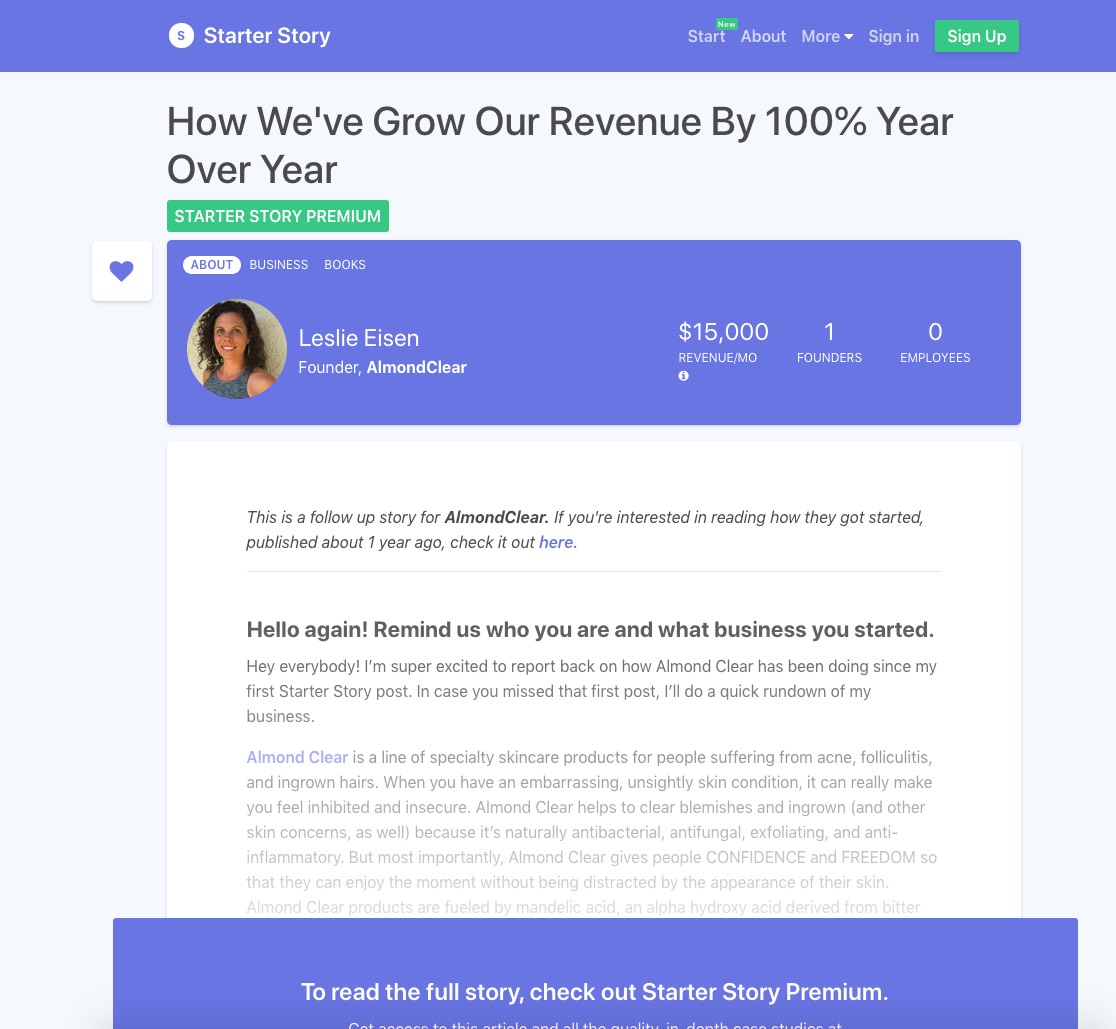There are many ways that you can earn money from your blog. From affiliate marketing, PPC advertising and selling your own services. While those models work great, there is one more business model that has become much more popular in the recent years: the membership model.
One of the advantages of the membership model is that it can help you generate recurring revenue. You can use it either as a main or a complementary way to make more money with your blog and your knowledge.
If you are already generating traffic to your blog, it’s going to be even easier to convert your readers into members. But even if you don’t have a blog yet, starting one is not going to be expensive and with tools like SEOPress, you can easily optimize your articles for SEO.
So let me give you a step by step plan that you can use to start your membership site.
1. Brainstorm & come up with 3 membership ideas
The best way to start a successful membership site in my opinion is to start by imagining what would a successful membership site that you would be proud of running look like?
What kind of value can you provide to your readers on a regular basis?
What would make you happy and fulfilled if you do that?
For some people, it can be sharing their knowledge in a form of infoproducts like video courses or webinars. For instance, blogmarketingacademy.com is a good example of converting SEO traffic to paid members.

In other cases, people simply put their best articles under a paywall like New York Times or Wall Street Journal. This strategy can also be used by smaller blogs.
For example, Pat Wells from StarterStory.com does exactly that:

And in some cases, people simply charge a recurring fee for access to the private community on Slack or Facebook.
There are many options on how to structure your membership site, but it has to bring your members some sort of value and (ideally) be fun for you.
So the way I would start is by brainstorming and creating a list of at least 3 ideas that I can implement to start a membership site. Think about the type of content that you’re going to deliver to your members and how often you will do that.
The next thing to consider is whether you want to build a private community like a Facebook group or a Slack channel and give access to your members. If you think your members would love that and you can afford to spend some time moderating it – then go for it.
And last but not least, come up with pricing terms for each of your membership levels. Think if you will offer discounted or free trials, will people get a discount if they buy an annual package. At this stage, the price is going to be an arbitrary number, don’t obsess about it too much. Just come up with something that you think is going to be reasonable.
Once you have that, you can proceed to the next step.
2. Survey your visitors & email subscribers
At this stage your goal is to validate your idea. Just because you’ve come up with something that excites you, doesn’t necessarily mean that people would love to buy it. The best way to check that is to ask your audience.
There are multiple ways to do it, but here is one: Go to Google Forms to create a survey form.
Write a short description and a list of benefits for each of the membership ideas that you have created in the previous step. Then, create a single choice question and ask people which membership model they like the most.
Also, give them an option to say that they don’t like any of the models above.
Add questions like “Why would like to join our membership?”, “What don’t you like about our membership”, “What would you like to change, add or remove from the membership models above” and “How much would you pay to be a member?”.
Aim for about 50+ responses (ideally 100+) to get a good sample size to see if at least any of your membership ideas interests your audience. It may be that you will have a clear winner after just the first survey. Or you may have to create a new list of ideas if none of the previous ones was compelling to your audience and ask your audience once again.
To be completely honest, you may not even be able to find an interesting idea for a membership site. And that’s fine. Maybe you will come with a better idea at a later stage, but most likely what will happen is that you will have a clear understanding of what your members want and what they are willing to pay for.
3. Create your sales page & pre-sell
Now, once you have a clear winner for your membership model, your goal should be to pre-sell people. Just because during the survey some people said that they like your idea, it doesn’t necessarily mean that they will buy. You need to make them take the next step.
And you can do it by pre-selling people.
This can be done in a variety of different ways. My suggestion would be to do the following:
Create a simple landing page where you describe your offer as clearly as possible. I suggest that you use a PAS copywriting formula to convert more visitors.
You can create your landing page on your own blog using plugins like Elementor or Divi or external software like ClickFunnels or Unbounce. Just make sure that you connect your page with a CRM or e-mail marketing software like Active Campaign or Mailchimp and make sure that you add people who sign up to a separate list or tag them appropriately so that you can then market only to that segment of your audience.
When it comes to the sign up itself, I want you to consider offering your first members a big discount. So, if you plan on charging $49/month for your subscription, then it’s probably a good idea to pre-sell it at $19/month. This will help you make more people take action and sign up.
It is also good to mention the launch date of your membership on the page which can also serve as a deadline for the pre-sell period for discounts.
4. Pick the best plugin for your membership model
Assuming that you have a WordPress website, you will need a membership plugin (or a set of plugins) to manage your members and payments.
There are many plugins that can help you do that, but the most popular, easy to use and flexible ones are the following:
- MemberPress
- Restrict Content Pro
- WooCommerce + WooCommerce Memberships & WooCommerce Subscriptions
- Paid Membership Pro + Addons
These plugins are good if you want to use a payment gateway like Stripe or PayPal, protect content on your site and accept recurring payments. However, what they will not do is help you structure your content.
If you want to create a video course (or a series of courses) and structure them into lessons, then you will need an LMS plugin like LearnDash or LifterLMS. LifterLMS has a built-in membership functionality and can help you accept recurring payments – you may not even need another membership plugin. With LearnDash though, I suggest using any of the 4 membership plugins I’ve mentioned above.
Just before you buy a plugin, make sure you have a clear list of requirements and check out the pricing of each membership plugin. There are little nuances that can sometimes make a big difference.
If you feel confident with WordPress and setting up plugins, you can go ahead and set things up on your own. On the other hand, if you need something out of the box that these plugins don’t provide or simply don’t feel confident you can set everything up properly – it is a good idea to talk to a developer who has experience with it.
I may be a little biased here, but my personal recommendation would be to talk to a pro first because it can save you some time and a lot of nerves in the future. You may even want to hire them if you have the budget. How much will you have to pay? Hard to tell, since website pricing can vary a lot.
And lastly, you can join various Facebook groups related to membership sites and ask people to help you with the tech stuff.
5. Create your content
Now that you have a membership site functionality in place, you can upload your content.
If you plan on creating a ton of content for your members, I would personally not do that before I launch. I think it’s better to focus on one discrete piece of content like a video course or a series of lessons. Your goal at this stage is to validate your idea without wasting too much time.
So think about something that will be valuable but doesn’t require you to spend weeks or months working on it.
6. Enroll your first members
Once you have created your first piece of content for your members, you can now start selling to them. The first thing that you need to do is to send an email to the email list that you have compiled during the pre-sell stage.
Obviously, you can email all people on your list to let them know about your launch. This may help you get a few more sales.
Next, you add a popup box to your blog to inform your readers that your membership is now available. This process should help you get your first members.
7. Gather feedback and testimonials
After you have your first members, your goal would be to gather testimonials and feedback.
Give your members a reasonable amount of time to use your product and then ask them what they think about it. This is where something like a private Facebook group or a Slack community can be handy since you can easily chat with your members.
Use the feedback provided by your customers to make appropriate changes to your membership model.
And if you get good testimonials, collect them and add them to your membership landing/sales page. This kind of social proof will help you convert more people into paying customers at a later stage.
8. Keep growing your traffic and number of members
At this stage you should have a proven membership model that people are willing to pay for. Now it’s just a matter of scaling that business. You need to bring more traffic to your site using various SEO and social media tools and techniques that will help you automate that process.
You can also hire a VA to help you with routine and low-level tasks so that you can focus on things that are more important and strategic. And always remember, as long as you provide high value to your members on a regular basis, they will stay paying members.
Conclusion
Converting your blog traffic to a membership site can be a great way to add an additional stream of income to your business and help you build your authority in your niche. With that said, it’s not an easy process and definitely requires some time and effort on your side.
But if you follow a proven process described above, stay persistent and bring value to your audience, good things will happen.